Vietnamese Noodles // 5 Dishes Other Than Phở 🍜
Five Vietnamese Noodle Dishes You’ve Probably NEVER Seen!
Noodles are incredibly popular and a common ingredient in Vietnamese cuisine. So today we are going to look at the best Vietnamese Noodles – that aren’t Phở (because you all know about that we assume).
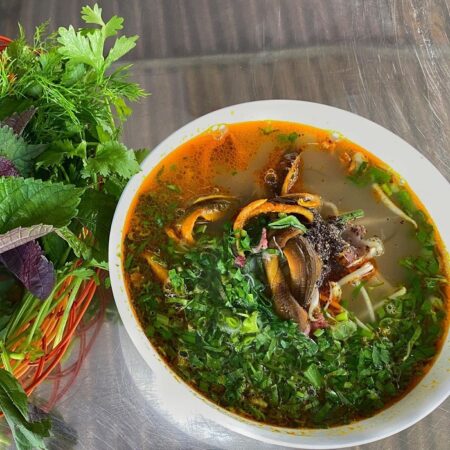
Noodles in Vietnam are served in various types of dishes such as soups, stir-fried dishes, or fresh wraps like gỏi cuốn (Vietnamese Spring Rolls).
The English word ‘noodles’ refers to a long thin piece of pasta, used especially in cooking.
However, this word can’t fully describe the various types of Vietnamese noodles that exist!
Before we start, why don’t you bookmark those articles below where we talk about even more types of Vietnamese food:
- 6 Must-Try Vietnamese Street Food & Snacks // North vs South
- The Best Traditional Vietnamese Food (To Eat During The Holidays)
In this blog, we want you to move away from the obvious order of Phở that everyone outside of Vietnam talks about, and welcome you to the elite club of Vietnamese noodles and Vietnamese cuisine!
Locals will be really impressed if you can reel off and order these dishes!
So let’s go…
Vietnamese Noodles #1 | Bún Thịt Nướng / Grilled Pork Noodles
Vietnamese Noodles #2 | Bánh Canh / Udon-like Noodle Soup
Vietnamese Noodles #3 | Miến Lươn / Eel Glass Noodles Soup
Vietnamese Noodles #4 | Bún Bò Huế / Hue Beef Noodles
Vietnamese Noodles #5 | Mì Quảng / Quang-style Noodles
Vietnamese Noodles | FAQs
Vietnamese noodles can be made from a variety of ingredients such as rice, mung bean, or dong starch with different shapes such as flat, slender, or big threads, which help people create various types of noodle cuisine. Let’s take a look at the 5 best (in our opinion)!
Vietnamese Noodles #1 | Bún Thịt Nướng
In southern Vietnam, a classic of Sài Gòn is bún thịt nướng. The dish differs in Hà Nội, where it is called bún chả.
The more you get to know Vietnam the more you will discover sharp differences between the north and south, whether it be dialect, traditional food or anything else!
In this instance though, the two dishes are pretty much exactly the same, just with different names.
The dish is served with grilled pork, rice vermicelli noodles, fresh vegetables, and herbs. All the ingredients are put into a big bowl and mixed with a special sauce – a combination of fish sauce, lime juice, minced chilies, sugar.
So what is the difference between the northern and southern variants you may ask?
- Bún thịt nướng is served with condensed sweet sour fish sauce. The must-have item to accompany this dish is BBQ pork.
- Bún chả often goes with diluted fish sauce and pickled papaya & carrot. The main topping of bún chả is round meatballs.
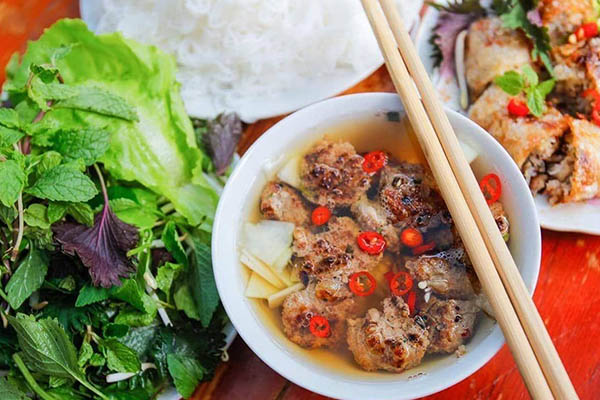
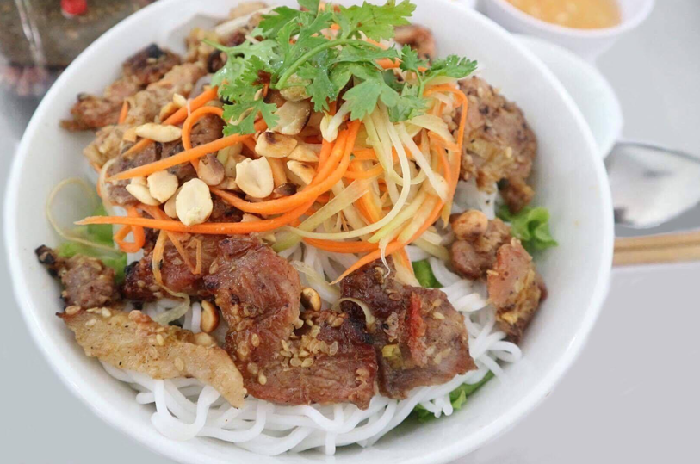
The ingredients to make Bún thịt nướng can be found easily at Asian markets.
On that note, why don’t you give it a try and have a go at making it at home.
Here’s a useful guide from Youtube below
Vietnamese Noodles #2 | Bánh Canh
Bánh Canh is made from the tapioca of rice flour in a bigger size, which makes this dish unique from other noodle dishes.
A bowl of Bánh Canh normally consists of nutritious bone broth, crab or shrimp, sliced pork, boiled quailed eggs, and “floating cake” (bánh nổi).
Unlike other noodle dishes, the stock of the Bánh Canh that is usually made from pork or chicken bones is made from gravy rather than a “brothy” soup.
We also have variants of this Vietnamese noodle dish which include:
- Bánh Canh Cua | Noodles topped with crab
- Bánh Canh Giò Heo | Noodles topped with stewed pork feet
- Bánh Canh Cá Lóc | Noodles topped with snakehead fish
Vietnamese Noodles #3 | Miến Lươn
As you are learning, Vietnamese Noodles vary by the region.
Our journey will now take us to the Middle of Vietnam, Nghệ An Province, to try Miến Lươn.
Miến lươn is derived from its two main ingredients including miến – glass noodles and thịt lươn – eel meat.
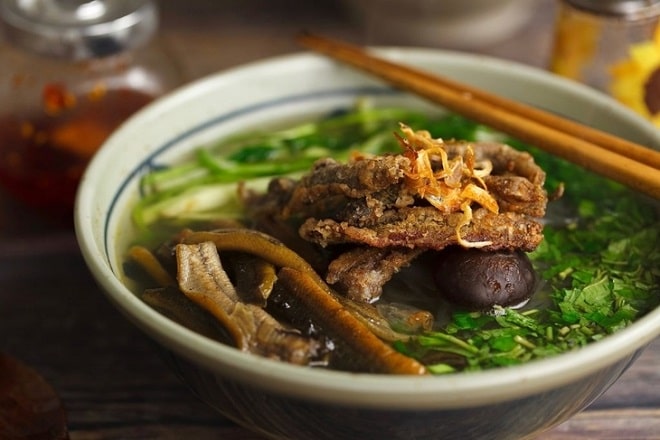
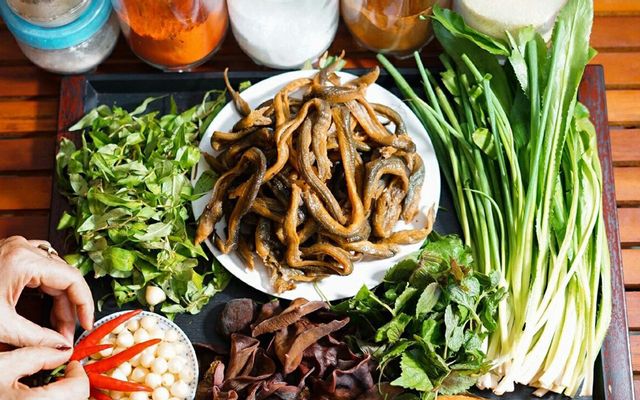
Vietnamese cilantro or rau răm is added to enrich the dish and add more flavour to it.
Miến xào lươn (stir-fried glass noodles with eel) is another variation of this dish as you can see below.
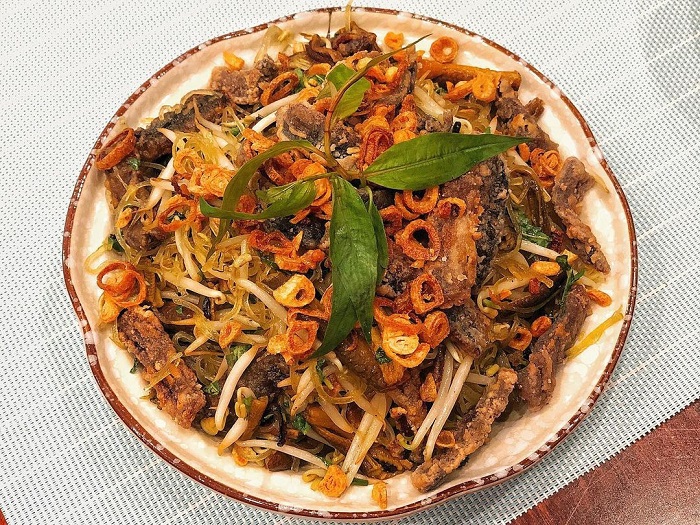
Vietnamese Noodles #4 | Bún Bò Huế
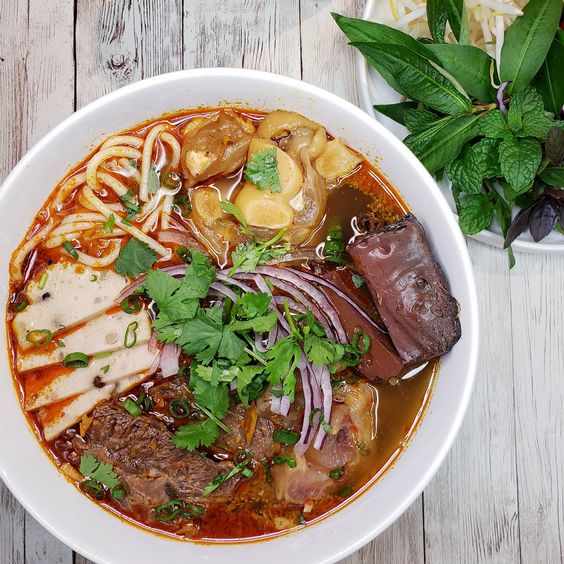
Can you guess where this Vietnamese noodle dish originated from? Look at the name and see what clue you can find?
Find out the answer here!
Today, Bún bò Huế is universal across the entirety of Vietnam because it’s loved by all, no matter where you come from.
Bún bò Huế is a combination of incredibly flavourful bone broth, big-sized rice vermicelli noodles, boiled beef shank, chunks of oxtail, pig’s knuckles, and boiled shrimp balls.
The dish includes a lemongrass based-broth and shrimp paste (or “mắm ruốc”) are the soul of Bún bò Huế which bring a unique taste from other dishes.
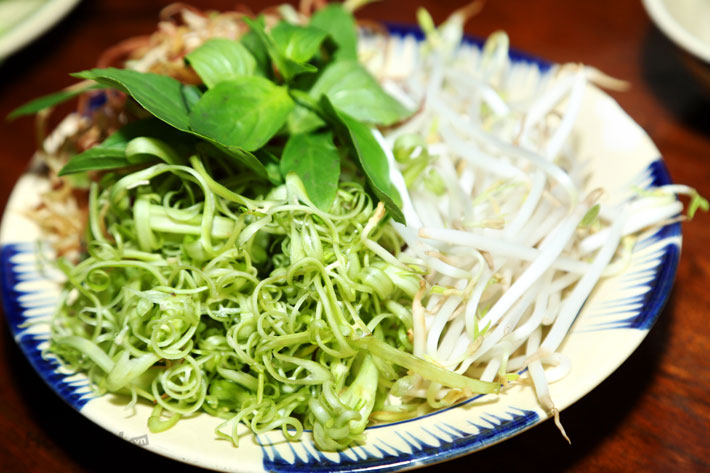
Here are some useful translations for you to learn more Vietnamese vocabulary
- Bún I Vermicelli noodles or rice noodles in general
- Bò I Beef
- Mắm Ruốc I Shrimp paste
- Hoa Chuối I Banana blossom
- Rau Muống I Water spinach
Vietnamese Noodles #5 | Mì Quảng
Bordered by Huế to the north, Quảng Nam is a province in the Central region of Vietnam.
Now can you see where the name of the dish, Mì Quảng, comes from?
The classic Mì Quảng has flat egg noodles and is topped with boiled eggs, shrimp, pork belly, flavourful broth, fresh vegetables, and herbs.
One fact about Mì Quảng is that the name of the dish will be defined by the protein topping served with it.
For example, we also have…
- Mì Quảng giò heo | Noodles topped with pork feet
- Mì Quảng ếch | Noodles topped with frog meat
- Mì Quảng tôm | Noodles topped with shrimp
- Mì Quảng bò | Noodles topped with beef
- Mì Quảng sườn | Noodles topped with pork ribs
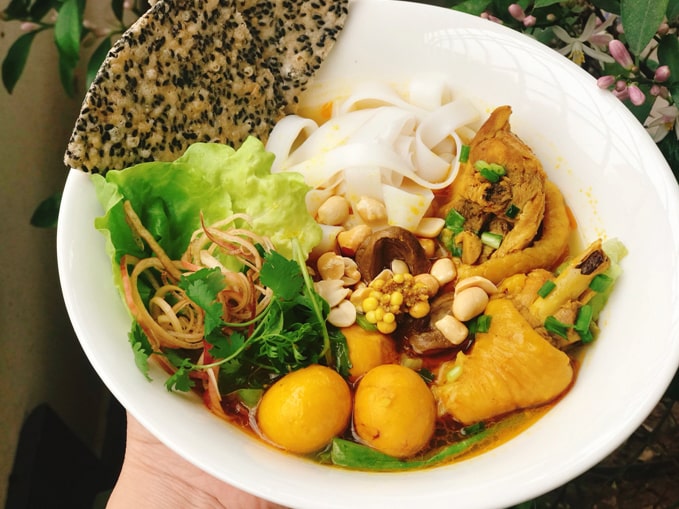
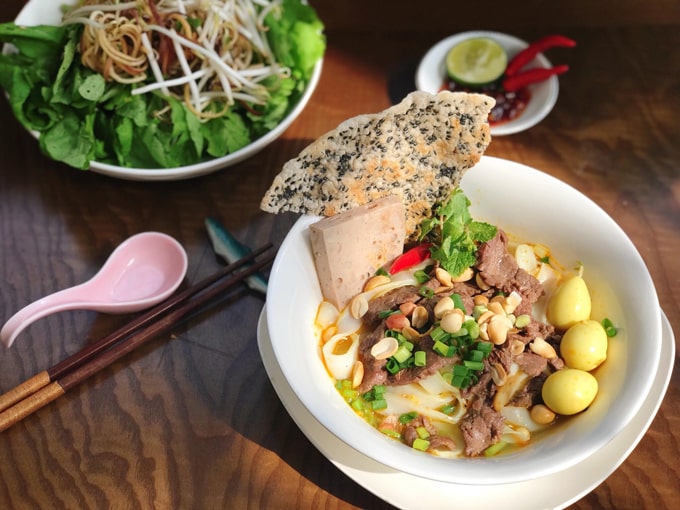

Well done, you must be hungry now, but one thing is for sure, you have levelled up your game! Vietnamese cuisine is a lot more diverse than people think on the surface!
Our great cuisine can vary greatly by the region and flavours are broad! That’s what makes Vietnamese cuisine so great!
Let us know what kind of Vietnamese noodle dish you want to enjoy the most by commenting down below.
Vietnamese Noodles // FAQs
What are the grilled pork noodles in Sài Gòn ?
It’s rice vermicelli noodles served with grilled pork, fresh vegetables, and herbs.
All the ingredients are put into a big bowl and mixed with a special sauce – a combination of fish sauce, lime juice, minced chilies, sugar.
This dish is called bún thịt nướng in southern Vietnam and differs slightly in Hà Nội, where it is called bún chả.
What is ‘bún chả’?
Bún chả is the signature Vietnamese noodle dish in the North.
Bún chả is often served with diluted fish sauce and pickled papaya & carrot. The main topping of bún chả is typically meatballs.
What makes Bánh canh different from other dishes?
Bánh Canh is made from the tapioca of rice flour in a bigger size, which makes this dish different from other Vietnamese noodle dishes.
What is ‘Miến lươn’?
Miến lươn is derived from its two main ingredients including miến – glass noodles and thịt lươn – eel meat.
There are 2 variations of the dish, soup and stir-fried.
What makes Bún bò Huế have its own unique taste?
Lemongrass broth and the shrimp paste or “mắm ruốc” are the key elements of Bún bò Huế which bring a unique taste from other dishes.
How many toppings can be served with Mì Quảng?
There are a wide variety of toppings
Mì Quảng giò heo | Noodles topped with pork feet
Mì Quảng ếch | Noodles topped with frog meat
Mì Quảng tôm | Noodles topped with shrimp
Mì Quảng bò | Noodles topped with beef
Mì Quảng sườn | Noodles topped with pork ribs
Where to learn Vietnamese for free?
Visit our Vietnamese Grammar Bank for free language lessons 🙂
For studying Vietnamese in Vietnam with professional teachers, make sure to have a look at our programs in Saigon and Hanoi, or contact us to start planning!
Want More From LTL?
FANCY LEARNING VIETNAMESE? We know you’ll love our top-rated online Vietnamese courses. We offer a 7-day free trial to all new online students where you can study 24/7.
What’s more – we even offer Vietnamese courses in Vietnam too. Check out our small group classes for Vietnamese or our individual programs.
Come and be a part of our amazing community!








